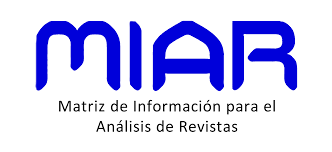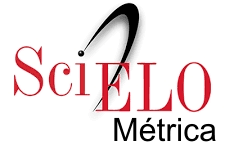Double thyroid and arrhythmic storm in a pregnant woman with multiple refractory tachycardias mediated by an intermittent anomalous Kent tract successfully ablated
DOI:
https://doi.org/10.18004/mem.iics/1812-9528/2024.e22132401Keywords:
Intermittent Wolf-Parkinson-White syndrome, Thyroid storm, Paroxysmal supraventricular tachycardia, Atrial flutterAbstract
Thyroid storm is a critical and infrequent state that conditions the dysfunction of multiple organs due to the effect of excess thyroid hormones. This endocrine dysfunction has a high mortality and generates typical manifestations such as tachycardia, fever, gastrointestinal, cardiovascular and heart disorders, and the central nervous system. Pregnancy has been associated with an increased incidence of arrhythmias. They need immediate treatment with antiarrhythmic drugs, electrical cardioversion, or emergency caesarean section. WPW is a congenital cardiac abnormality that consists of the presence of an abnormal bundle (Kent bundle) that prevents the normal conduction system, directly joining the atria and ventricles. We will see the case of a 32-week pregnant woman who presented symptoms of thyroid storm and multiple episodes of paroxysmal supraventricular tachycardia (PST), with a torpid clinical course mediated by an abnormal intermittent Kent bundle. It is evident that the thyroid storm in the context of pregnancy produced changes in the electrophysiological properties of the intermittent Kent bundle, which led to the development of multiple PST refractory to electrical and pharmacological cardioversion. Moreover, it also did not improve with total thyroidectomy, only resolved completely with radiofrequency catheter ablation of the Kent bundle.
Downloads
References
Franklyn JA, Boelaert K. Tyrotoxicosis. Lancet. 2012; 379(9821):1155-66. http://doi.org/10.1016/S0140-6736(11)60782-4
Devereaux D, Tewelde SZ. Hyperthyroidism and Tyrotoxicosis. Emerg Med Clin North Am. 2014; 32 (2): 277-92. http://doi.org/10.1016/j.emc.2013.12.001
Satoh T, Isozaki O, Suzuki A, Wakino S, Iburi T, Tsuboi K, et al. 2016 Guidelines for the management of thyroid storm from the Japan Tyroid Association and Japan Endocrine Society. Endocr J. 2016; 84(6): 912-8. http://doi.org/10.1111/cen.12949
Abalovich M, Alcaraza G, Aseb E, Bergoglioc L, Cabezond C, Gutierreza S, et al. Guía de tiroides y embarazo. Rev Argent Endocrinol Metab. 2016;5 3(1): 5-15. http://dx.doi.org/10.1016/j.raem.2016.05.003
Regitz-Zagrosek V, Roos-Hesselink J, Bauersachs J, Blomstrom-Lundqvist C, Cifkova R, De Bonis M, et al. ESC Guidelines on the management of cardiovascular diseases during pregnancy. European Heart Journal. 2018;39(34): 3165-241. https://doi.org/10.1093/eurheartj/ehy340
Katritsis DG, Boriani G, Cosio FG, Hindricks G, Jais P, Josephson ME, et al. European Heart Rhythm Association (EHRA) consensus document on the management of supraventricular arrhythmias, endorsed by Heart Rhythm Society (HRS), Asia-Pacific Heart Rhythm Society (APHRS), and Sociedad Latinoamericana de Estimulación Cardiaca y Electrofisiologia (SOLAECE). Europace. 2017; 19: 465-511. http://doi.org/10.1093/europace/euw301
Pijuan-Domenech A, Galian L, Goya M, Casellas M, Merced C, Ferreira-Gonzalez I, et al. Cardiac complications during pregnancy are better predicted with the modified whorisk score. Int J Cardiol 2015; 195: 149-54. http://doi.org/10.1016/j.ijcard.2015.05.076
Silversides CK, Grewal J, Mason J, Sermer M, Kiess M, Rychel V, et al. Pregnancy Outcomes in Women With Heart Disease: The CARPREG II Study. J Am Coll Cardiol. 2018 May 29;71(21):2419-30. 10.1016/j.jacc.2018.02.076.
Pappone C, Vicedomini G, Manguso F, Baldi M, Pappone A, Petretta A, et al. Risk of Malignant Arrhythmias in Initially Symptomatic Patients With Wolff-Parkinson-White Syndrome. Clinical Perspective. Circulation. 2012;125(5):661-8. http://doi.org/10.1161/CIRCULATIONAHA.111.065722
Obeyesekere MN, Leong-Sit P, Massel D, Manlucu J, Modi S, Krahn AD, et al. Risk of Arrhythmia and Sudden Death in Patients With Asymptomatic Preexcitation. Clinical Perspective. Circulation. 2012;125(19):2308-15. https://doi.org/10.1161/CIRCULATIONAHA.111.055350















